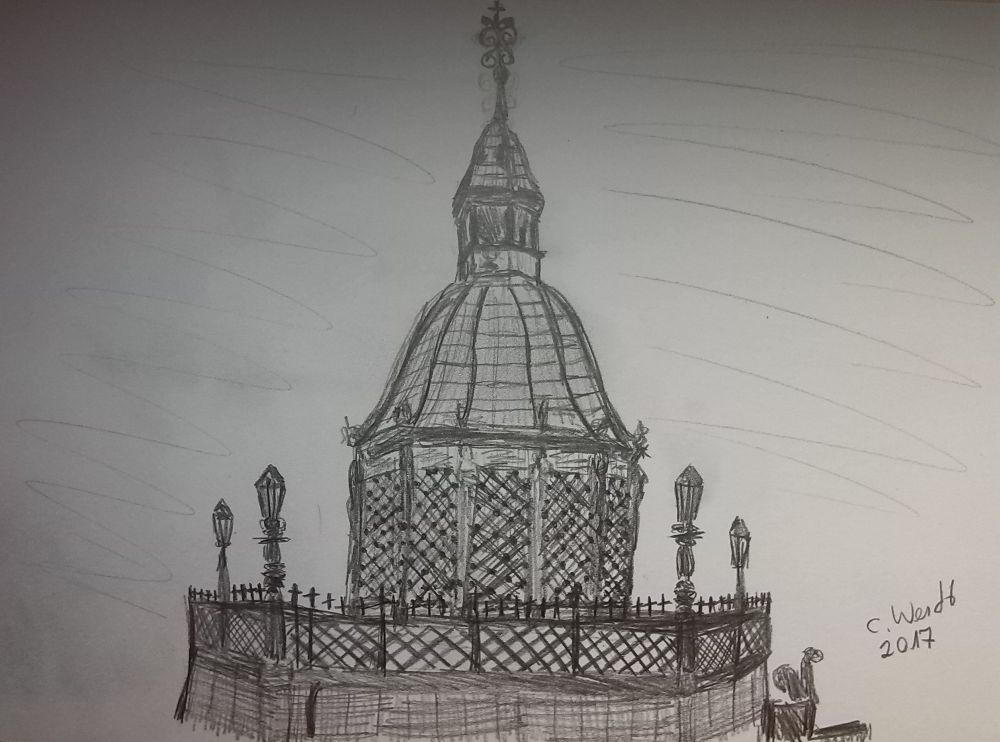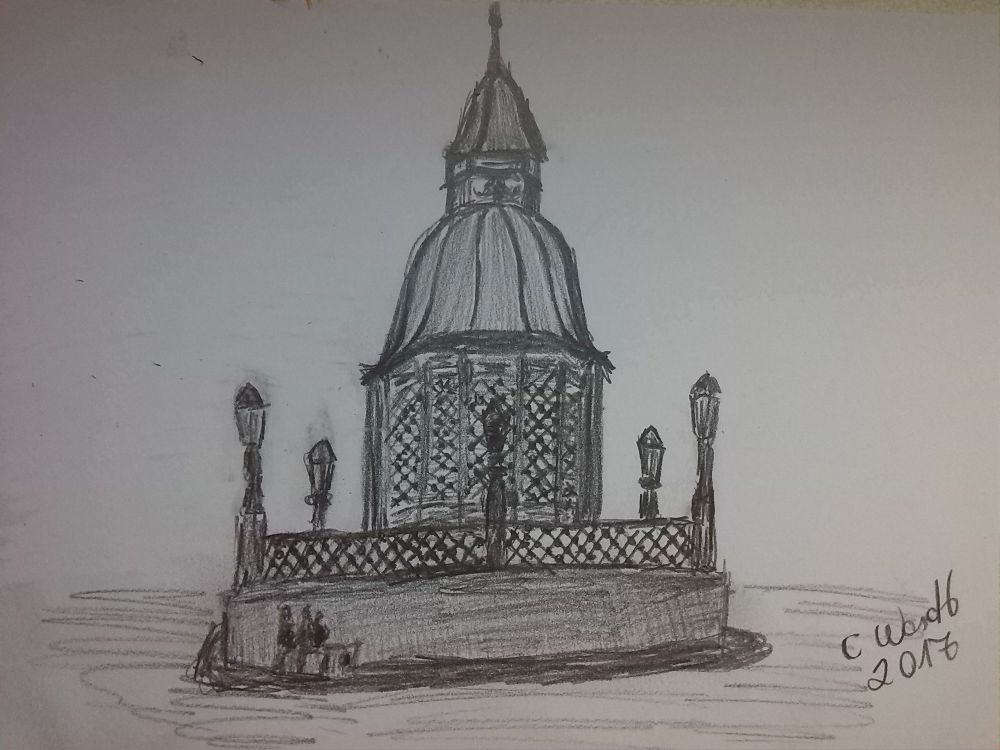Who built the Water Art of Wismar?
From the deceased builder and architecture
The builder of water art
Philipp Brandin is generally credited with water art.
Friedrich Techen (1859-1936) doubted the construction by Philipp Brandin and credited it to Heinrich Dämmert, a master of Lübeck. Philipp Brandin already died in 1594, before the construction of the water officially begun.
Dämmert, was mentioned in the account books of St. Petri in regard to buildings and art monuments of Lübeck. In a Wismar protocol, the order of the Lübeck Council is described.
Stonecutters, bricklayers and roofers have also been involved. The expenses flowed into Gotland stones, timber, wall and bricks and boards.
„Nix and Meirmaid“
On the east side of the water are two bronze figures, which function as water spouts. In the vernacular, they were called „Adam and Eve“, „Nix and Mermaid“ or „Frauloch und Mannloch“. In 1861 they were installed by Heinrich Thormann.
The bronze original figures were removed in 1897. When the new water tower replaced the water art they were handed over to the historical museum, the „Schabbellhaus“.
The architecture of the Water Art
The plans of the water art were created by Philipp Brandin.
The water art is built on the twelfth side in the shape of a temple, modeled on the Italian Renaissance.
The pavilion is divided by twelve male and female hermenophilasters, originally from sandstone. The bell-shaped cap rests on them.
The lantern is specially designed like the pavilion and is worn by hermenpilasters, formerly made of wood.
Above the iron grating there are slogans, which in golden writing represent the Latin text, which speaks of the drinking water supply of earlier times.
Under the iron grating is the German translation.
On Wikipedia you will find a cross-section drawing of a reconstruction proposal of the water art from the year 1858. It is a variant with open round pool, which was not realized.
Between 1860 and 1861 the water art was restored because of signs of wear. Another reason for the restoration was the too small basin size. Heinrich Thormann was the director of work. After the wood pipes were replaced by cast iron pipes, he set the water art on a pedestal and decorated with lawn.
The Institute for the Preservation of Monuments of Schwerin supported a comprehensive restoration from 1966 to 1976.
The stonework was supported by Schwerin sculptor Rolf Lange, his family members Siegfried, Dietmar and Ingrid Lange, as well as Hannelore Colmsee.
These include a plumber master Zelder from Schwerin, the wood sculptor Figurski from Güstrow, the Wismar blacksmith Heinrich Schoknecht and other experts.
Thormann placed a high and a deep container under the two bronze figures „Nix and Mermaid“, which he sat down.
Once again, a restoration took place from 1966 to 1976.
Between 1972 and 1976 further restoration work was carried out on the copper roof, on the roof beam, as well as on the roof top. All the sandstone details and the wooden parts of the lanterns were replaced by copies.
In 1998, the latest restoration was carried out at the water jar „Nix and Mermaid“.
The six-sided lanterns on the water art correspond to those on the roof of the ridge turret of St. Petri.
In 1998 the water art was improved the last time. There was made a copy of „Nix and Mermaid“ which was set at the water art.
We continue with the question: „How did the water work?“
Quellen
https://de.wikipedia.org/wiki/Wasserkunst_Wismar
Bernd Herrmann, Christine Dahlke (Hg.): Schauplätze der Umweltgeschichte Werkstattbericht, Graduiertenkolleg 1024 Interdisziplinäre Umweltgeschichte, Universitätsverlag Göttingen 2008, s.195-197.
Friedrich Techen: Die Wismarsche Wasserkunst und Meister Heinrich Dammert. In: Mitteilungen des Vereins für Lübeckische Geschichte und Altertumskunde. 1919, S. 60–67.
Das schöne Detail: Architekturdetails Wismars von der Gotik bis zum 20. Jh. Hg. Vom Rat der Stadt Wismar. Abteilung Kultur. Wismar, 1989. S.34-35.
Siegfried Berndt: Von Wismars Wasserkünsten. In: Wismarer Beiträge; Heft 8. Hanse Druck, Wismar, 1992, S. 5-11.
Next Articel: How does the Water Art Work?
Originally posted 2017-07-15 08:35:41.


2 Replys to “Who built the Water Art of Wismar”